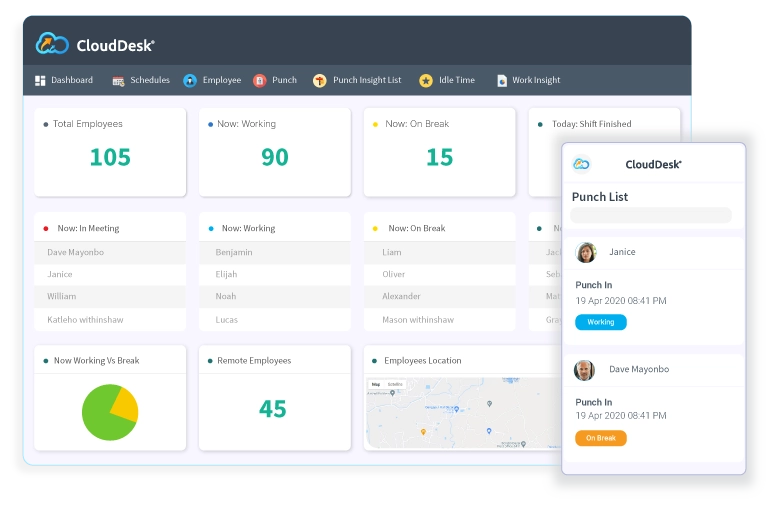One of the calculations for expanding your company is increasing the rate at which you hire new employees. However, to ensure the success of your new employees, you must also set a standard for their performance. A performance standard is a set of guidelines that define what each employee is expected to do and how… Continue reading Definition and Methods for Establishing a Company-Wide Performance Benchmark
Definition and Methods for Establishing a Company-Wide Performance Benchmark

One of the calculations for expanding your company is increasing the rate at which you hire new employees. However, to ensure the success of your new employees, you must also set a standard for their performance.
A performance standard is a set of guidelines that define what each employee is expected to do and how well they should do it. Such measures are frequently included in organizational performance management plans.
We’ll review the value of performance standards, how to create them, and how to assess success in this manual.
Why do we need benchmarks for performance?
Performance standards outline what is expected of new hires before they begin working for the organization. Students can track their development and performance daily using this strategy.
What role do performance expectations have in organizational success?
Every employee in a company will understand what is expected of them if clear performance standards are in place. With the proper measures in place, the following benefits will accrue:
Personnel – There will be no doubt about what is expected of each employee and how they can enhance their skills and advance in the organization. Instead of waiting for a yearly assessment, they could continually evaluate themselves.
Leadership – monitors employee development and adjusts management techniques to maximize productivity.
HR – When employees depart, it significantly strains human resource budgets. Defining performance expectations allows HR to make more informed recruiting decisions and increases employee retention.
Formats for Performance Criteria
Industry, function, and pay level are just a few factors that may influence how you are evaluated on the job. However, there are a few common standards that apply to every job description:
Employee Collaboration and open dialogue
Employees’ abilities to collaborate effectively are measured against established teamwork and communication norms. Depending on the particulars of the job, subtopics could include—but not be restricted to—the following job functions:
- Active listening
- Clear, concise email writing
- Dedication to diversity and inclusion
Usually, these norms specify who will receive the employee’s messages. For example, it could be coworkers, customers, or clients.
Managing one’s time
Work done by a specific deadline must be specified in time management guidelines. In addition, goals can be set for time management skills such as prioritizing, multitasking, and scheduling.
No matter what field of work a person is in, it’s crucial to instil these principles in them. For example, although timeframes are more malleable in Agile project management, time management is still critical.
Accountability
Accountability standards describe employees’ duties regarding people, projects, and institutions.
Employees should not be concerned since those standards give a clear path to those responsible for an error. Also, inform your employees that you want to use them to recognize their accomplishments.
Technical aspects of an employee’s performance
Technical aspects of an employee’s performance may also be subject to company standards. For example, this could involve the following:
- Attaining or maintaining certificates
- Studying Emerging Languages of Computer Coding
- Devices that are compliant with the General Data Protection Regulation
- Completion of a safety course
Technical standards should describe and detail deadlines for addressing competencies, certifications, and compliance requirements.
Things to think about while establishing goals and benchmarks
According to OPM.gov, a performance criterion must be “objective, quantifiable, reasonable, and defined clearly in writing.” As a result, there will be less possibility for misunderstanding, and both workers and management will be clear about their respective roles.
Team members are motivated to perform at even higher levels when these standards serve as an inspiration.
When all is said and done, it’s best to strike a balance between broad strokes and tiny detail. Create company-wide standards that any department may use. However, you should make slight changes to match the specific needs of each team or individual.
What criteria should be used while establishing goals?
The most effective way to establish performance standards is to use a tried-and-true technique that guarantees the resulting benchmarks are observable, quantifiable, achievable, and well-defined.
- Look at the employee’s present duties and see how they stack up against those listed in the job description.
- Discuss the employee’s previous performance objectives and whether they were met or not.
- Base your choice on what’s important to both the employer and the employee.
- Select the individual factors or criteria defining the employee’s job success.
- Learn how to measure these factors consistently and how to use those measurements over time.
- Create a scale (often between 1 and 5) to grade employees’ accomplishments regarding the criteria.
How to keep staff updated on key performance measures and indications
Employees can only perform to their best ability if they are aware of the factors that will be included in your evaluation of their work.
Establish a check-in plan for each employee and keep detailed records of their progress. Take into account self-evaluations as well. You may then compare the manager’s assessment of each worker’s performance to the worker’s judgement of their performance.
Even with the newfound openness, some changes to the performance standards method will be required.
Rationalization of employee performance expectations
No matter how well constructed, standards will unavoidably require updating over time. To determine if any of these changes are necessary, think about the following questions:
- Is it quantifiable? Do team members have reasonable expectations?
- Does the typical worker achieve or fall short of these goals?
- Do new hires often raise concerns or show bewilderment when confronted with the rules?
- To ensure the appropriate modifications are made, a trial period might be put into place.
Setting benchmarks for performance during a trial run
Set up a trial period before applying your standards to major personnel changes. Workers are encouraged to provide direct answers to questions about the standard’s terminology, viability, and potential at this period.
Consult with your staff to increase trust in your standards. Since they contributed to its creation, employees are more inclined to take pride in it.
A Few Parting Thoughts
When properly implemented, performance criteria can benefit all parties involved. However, your policy may only be effective if you have solid metrics. CloudDesk analyzes your team’s performance by showing their activity levels, website and app usage (with screenshots), and more.
Similar Posts

Employee Monitoring Software Helps Managers To Manage Remote Employees

How Remote Work Leads to More Loyal Employees




